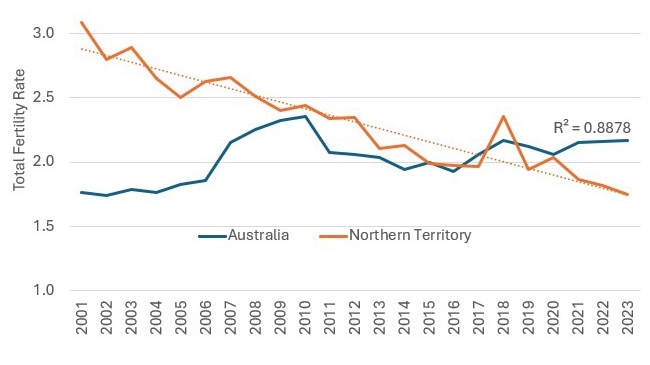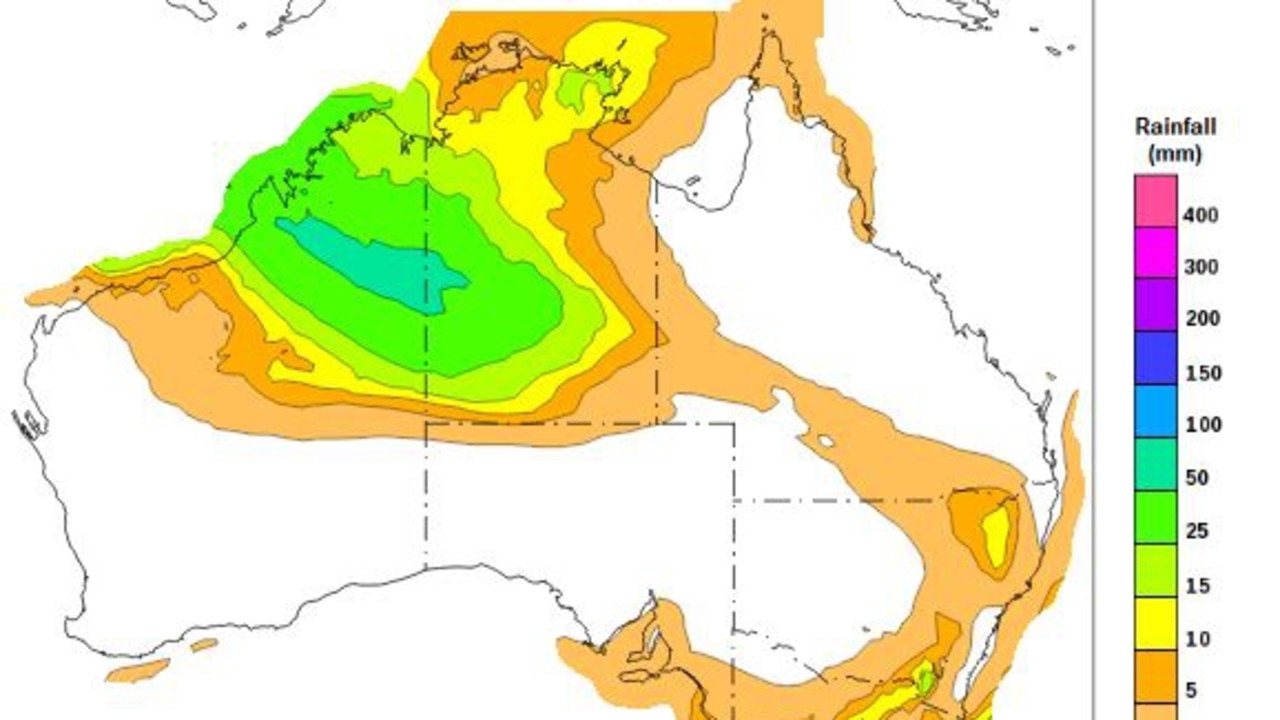Demographers are worried that the Northern Territory’s 40 year low birth rates could lead to further decreases
Births in the Northern Territory are lingering at rates similar to those of the early 1990s, according to the latest quarterly data, as demographers warn of future decreases. Find out why.

News
Don't miss out on the headlines from News. Followed categories will be added to My News.
Births in the Northern Territory are lingering at rates similar to those of the early 1990s, according to the latest quarterly data, as demographers warn of future decreases.
It comes at a turbulent time for Territory mothers as Healthscope, the operator of Darwin’s private maternity ward, withdraws services citing declining birthrates and “operational issues”.
There were 881 recorded births in the September 2024 quarter, down from the 912 seen in the June quarter and the 948 births seen in the March quarter, according to the Australian Bureau of Statistics.
Deaths also rose, with 351 recorded in the September quarter, up from 319 in the June quarter and 265 in the March quarter.
Natural increase, the difference between births and deaths, contributed 2171 to the population in the year September 2024— slightly lower than the 2182 net rise in the previous year.

“There’s still a fairly positive natural increase, with more births than deaths … [but] we’re seeing the gap getting smaller,” said Andrew Howe, a demographer at the ABS.
Mr Howe said the NT had a healthier natural increase compared to other states because of its younger population — meaning more women in child-bearing ages.
“While the NT has 0.9 per cent of Australia’s population, it currently has 1.1 per cent of the country’s births, and just 0.7 per cent of the county’s deaths,” he said.
Between 2019 and 2023, natural increase averaged 2362 people per year, much lower than the long-term averages of 2743 over the past 40 years, and 2,747 since 2000.
Long-term data shows births and deaths rose steadily until 2012, when it peaked at 3096.

Despite continued population growth, births reached their peak in 2012 then began to decline from 2016, while deaths also decreased from their peak in 2012, said Dr Andrew Taylor, a demographer at Charles Darwin University’s Northern Institute.
“The number of births in 2022 was similar to the levels seen in the early 1990s — even though the population in 2023 was 53 per cent higher than in 1991,” he said.
There was also a large and ongoing decline in the total fertility rate (TFR) in the NT for Aboriginal and Torres Strait Islander births.

Dr Taylor said the decline was consistent with improving education and employment outcomes, with reductions most noticeable for young mothers from 14 to 25 years
old.
The trends suggested natural increase would continue to decline, he said, “given … the population is ageing quite rapidly”.
“The growth rate for the Aboriginal population of the NT is projected to decline starting in the next two decades from the dramatic prior falls in the TFR and numbers of births, as well as ageing in our Aboriginal population,” he said.
More Coverage
Originally published as Demographers are worried that the Northern Territory’s 40 year low birth rates could lead to further decreases




